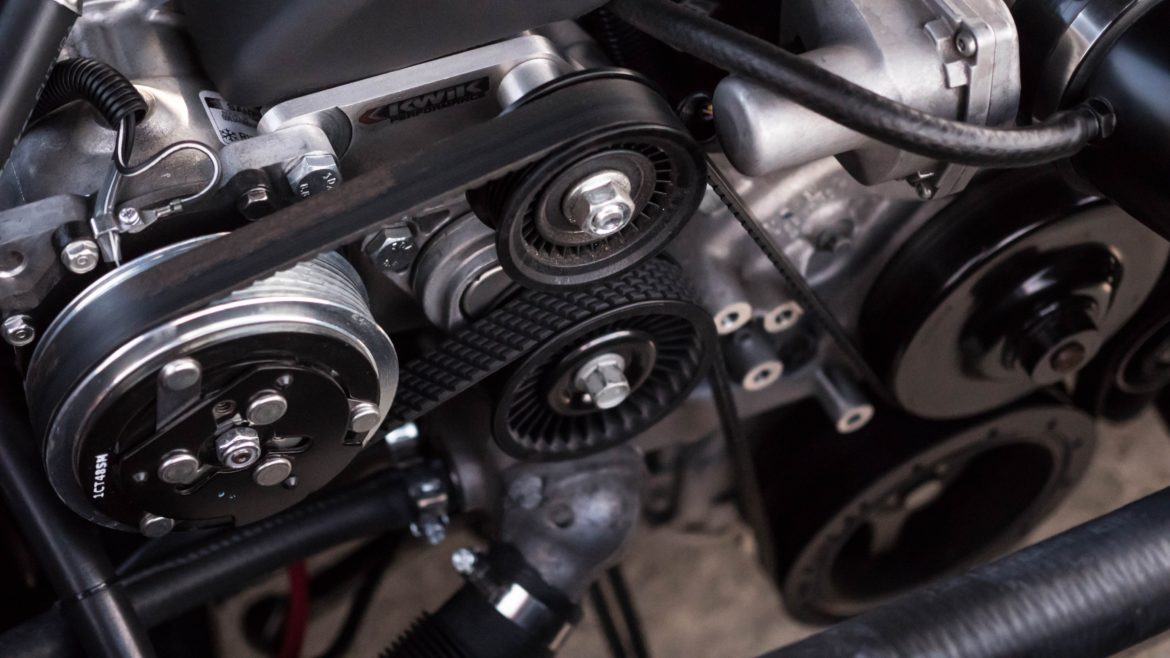The simple scheme of an automotive air conditioning system consists of an evaporator, condenser, drier, expansion valve, tubing, and the main component, the compressor.
The compressor is responsible for the increase of pressure in the system. The pressure allows the refrigerant to get pumped through all of the components of the air conditioning system. It also raises the pressure and temperature of the fluid, allowing the car to cool effectively. The AC compressor is belt driven and runs off of engine power.
An automobile AC compressor is commonly a rotary style or reciprocating style compressor, the reciprocating compressor being the most popular. Reciprocating compressors are slightly more efficient than rotary compressors because they need less power from the engine to work. Still, the difference is so minimal that people usually tend to choose the rotary arrangement because of its long life-span. Reciprocating compressors have a higher number of mobile components, and the seals tend to fail frequently.
When the compressor starts to fail, its cooling capacity decreases. If you’ve ever wondered what are the symptoms of a bad AC compressor, here is a brief list that highlights the most common ones.
Loud noise coming from under the hood when turning on the AC
A loud squeaking noise coming from the compressor means that its mounting bolts are not correctly adjusted or its missing one. It could also be that the belt is misaligned. Since the compressor works with bearings and other moving internal components, it’s also possible that they’re worn-out or broken and loose inside the compressor, causing more damage.
The air conditioning system is not cooling the car
The most noticeable symptom of a bad AC compressor is that the cooling capabilities of the AC system are greatly reduced. This would cause a higher temperature inside the cabin, making it uncomfortable, especially during summer. If the seals inside the compressor are worn-out, refrigerant escapes from the system, and if there’s no refrigerant, the air conditioning system cannot adequately cool the air. If there’s a significant loss of refrigerant, the compressor’s housing can get hotter than usual possibly causing damage to the internals of the compressor.
The smell of burnt rubber coming from under the hood when the AC is on
The auxiliary systems of the car that work with engine power use a belt-type transmission. Since the AC receives power via a belt, it’s a possibility that it is worn-out or not installed properly. When the belt is too tight, the acting force on the pulley increases and can be harmful to the bearings. If the belt is too loose, you may notice liquid rubber collecting in spots near the AC compressor. A good rule of thumb to test for an appropriately adjusted belt is you should be able to turn it halfway no more or less.
The compressor is not starting
The clutch is responsible for the power transmission between the engine and the compressor. When the compressor doesn’t start, we won’t hear any sound coming from it, and it won’t cool the cabin. This happens when the mechanical system that engages the clutch is damaged or because the clutch friction material is worn-out.
If you notice any of these symptoms, you might be facing an AC compressor failure. Although the AC compressor is not an essential part of the operation of your vehicle, it’s critical to check the engine as soon as possible in case it is causing damage to your car. In almost all cases, these symptoms of a bad AC compressor won’t affect the performance of your car, but driving during the summer without AC is no fun.

